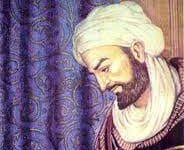The Taiheiki-A Review
The Taiheiki-A Review
The Taiheiki- A Review
Introduction:
‘The Taiheiki’ holds a significant place in Japanese literature as one of the most prominent war epics from the late medieval period. Written during the 14th century, it offers readers an intricate tapestry of historical events, political intrigue, and the spirit of samurai culture. This review delves into the various aspects of ‘The Taiheiki,’ discussing its historical context, narrative structure, themes, character portrayal, and enduring impact.
Historical Context:
‘The Taiheiki,’ also known as the ‘Record of the Great Peace,’ was written during a tumultuous period in Japanese history known as the Nanboku-chô period (1336–1392). This era marked a time of conflict between the Northern and Southern Courts for imperial legitimacy. The authorship of ‘The Taiheiki’ is attributed to multiple individuals, and its composition spanned several decades, capturing the dynamic socio-political landscape of its time.
Narrative Structure and Plot:
The narrative structure of ‘The Taiheiki’ is sprawling and complex, reflecting the multifaceted nature of the historical events it depicts. The tale unfolds through a series of interconnected episodes, battles, and political maneuvers. The central plot revolves around the conflict between the Ashikaga shogunate supporting the Northern Court and the Southern Court loyalists, who seek to restore the emperor’s power.
The narrative’s strength lies in its ability to interweave personal stories of key characters with the broader historical backdrop. The story’s focus on both battle strategies and court politics provides readers with a holistic understanding of the era’s challenges and aspirations.
Themes:
‘The Taiheiki’ explores a myriad of themes that resonate through time:
Loyalty and Honor: The samurai code of loyalty and honor takes center stage, as characters grapple with their commitment to their lords, families, and principles.
Fate and Destiny: The narrative contemplates the role of fate in shaping individual lives and the course of history, as characters navigate the unpredictable tides of war.
Leadership and Governance: The struggles for power, the complexities of leadership, and the impact of political decisions on a nation’s fate are prominent themes.
Identity and Allegiance: The conflict between the Northern and Southern Courts forces characters to question their allegiances and the values they hold dear.
Humanity in War: ‘The Taiheiki’ showcases the humanity and vulnerability of warriors, reminding readers that even in the midst of battle, characters experience fear, love, and grief.
Character Portrayal:
The cast of characters in ‘The Taiheiki’ is diverse, encompassing various ranks and backgrounds, from emperors and shoguns to foot soldiers and courtiers. The characters are portrayed with depth, displaying their motivations, fears, and internal conflicts. Notable figures like Kojirô Sasaki, Ashikaga Takauji, and Nitta Yoshisada emerge as emblematic representations of the era’s complexities and values.
Enduring Impact:
‘The Taiheiki’ has left a lasting imprint on Japanese culture, inspiring subsequent generations of writers, playwrights, and artists. Its depiction of the samurai ethos, the interplay of political power, and the exploration of human nature in times of conflict continue to resonate with contemporary audiences. Additionally, the work’s influence can be seen in modern media, as it has laid the foundation for many historical dramas, novels, and films that explore similar themes.
Conclusion:
‘The Taiheiki’ stands as a literary masterpiece that encapsulates the essence of medieval Japan’s societal, political, and cultural dynamics. Its sprawling narrative, rich character development, and exploration of timeless themes make it a must-read for those interested in history, samurai culture, and the intricate interplay between personal struggles and historical events. As a testament to the enduring power of storytelling, ‘The Taiheiki’ remains a cherished work that bridges the gap between past and present. 0 0 0.
The Taiheiki-A Review
You May Like: Beowulf-A Review
N.B. The articleoriginally belongs to the book entitled ‘The Reviews of Epic Literature Around the World Vol-II‘ by Menonim Menonimus.











